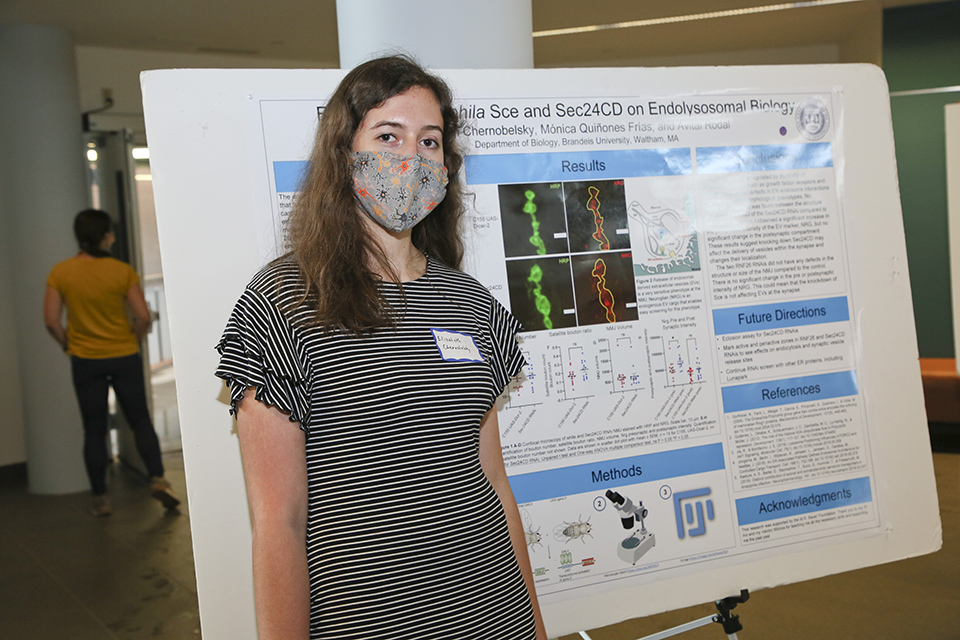Elizabeth Chernobelsky
M.R. Bauer Foundation Summer Science Research Fellow
Rodal Lab, Department of Biology
Brandeis University

Effects of Drosophila Sce and Sec24CD on Endolysosomal Biology
The endoplasmic reticulum (ER) and endosomes form contacts that have been shown to regulate endosomal maturation and cargo transport. Here I explored how the ER regulates endosomes at the neuromuscular junction (NMJ) of Drosophila melanogaster larvae. I screened two genes, Ring finger protein 26 (RNF26) and Secretory 24CD (Sec24CD), for effects on endolysosomal biology by using RNA interference (RNAi) to knock down their expression in motor neurons. Preliminary results show that knockdown of RNF26 and Sec24CD has no significant effect on the bouton number, satellite bouton number, or satellite bouton ratio. The lack of changes in neuronal morphology could suggest that there are no significant changes to signaling pathways. Sec24CD increases the presynaptic intensity of Neuroglian, an extracellular vesicle protein. This suggests that Sec24CD, a regulator of cargo transport from the ER, may play a role in the trafficking of EVs and how they interact with endocytic compartments at the synapse.
Personal Statement and Pandemic Reflection
I am very grateful that I had the opportunity to do research in a lab setting full-time for the first time this summer. My project was a screen of two ER genes to explore how the endoplasmic reticulum regulates endosomes at the neuromuscular junction (NMJ) of Drosophila melanogaster larvae. I used RNA interference to knock down the expression of the proteins in motor neurons and quantified changes to the NMJ morphology and intensity of Neuroglian, an endogenous extracellular vesicle cargo in the pre and postsynaptic compartments of the neuron. I improved my dissections and learned numerous skills, including immunocytochemistry, spinning disk confocal microscopy, and image analysis. I also read and discussed papers every week with my mentor to learn more about the proteins that I was studying. Finally, I helped my mentor test several antibodies that she had conjugated to fluorophores to speed up the staining protocols.
Due to the COVID-19 pandemic, new lab members were not allowed to get trained to use the microscope during the school year due to the small size of the room. It was also more challenging to learn new techniques, such as immunocytochemistry, that require multiple hours of training due to capacity limits. As a result, I had to spend the first few weeks learning and practicing these skills before I could do them independently for my project. This delay prevented me from screening an additional protein and performing all the experiments that I had planned. Overall, I am thankful for the fellowship and the guidance I received from everyone in my lab that allowed me to have a productive research summer.